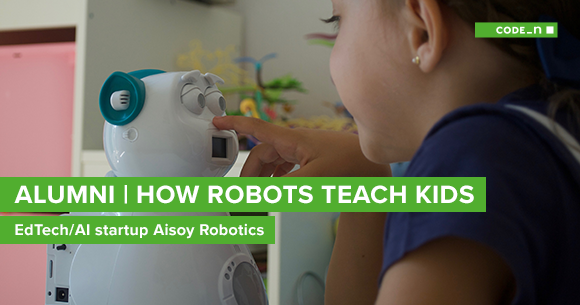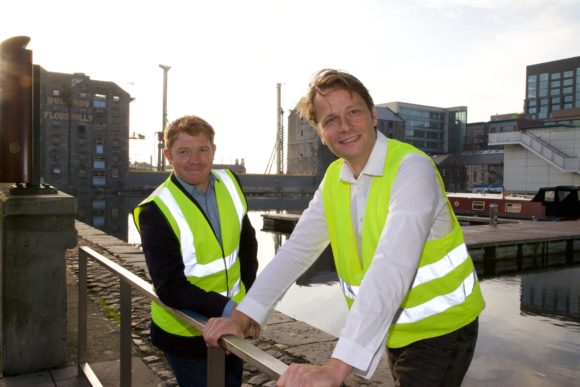Industry 4.0: When factories get smart
The Internet of Things (IoT) is branching out rapidly into different areas, and this development will not pass by modern industrial manufacturing unnoticed – in fact, it has the potential to significantly improve efficiency. As products become evermore “made to measure,” systems and processes will need revamping. This general trend is being referred to as Industry 4.0. In this post, we’d like to take a look at what people mean by the term applied to the “fourth industrial revolution.”
The idea of Industry 4.0 has not been around all that long. It first appeared on the radar in 2011 at an annual industrial trade show in Hanover, Germany. To get a feel for the scale of the fourth industrial revolution this set underway, it would be useful to look again at the three revolutions we’ve already experienced and examine how much they’ve shaped our lives and work.
- The 1st industrial revolution raised the curtain on mechanical production using the power of water and steam, simultaneously lowering the curtain on a world solely shaped by agriculture and manual trades. Using fossil fuels to produce goods opened the door to unimaginable advancements in manufacturing and this raised the standard of living for millions of people.
- The 2nd industrial revolution was a time of optimization in industrial manufacturing and continuing advancements in the distribution of work. Production lines and 8-hour shifts are symbolic reminders of these developments. Hand in hand with these changes came the expansion of electricity and the ascendance of the chemical industry, which opened up completely new fields of industrial manufacturing.
- The 3rd industrial revolution is a child of our times, most poignantly symbolized by the computer. The digitalization of many work processes and communication channels has shot the industrial manufacturing of goods into the fast lane, simultaneously facilitating global work distribution.
So now comes the fourth industrial revolution, which may only just be getting out of the starting blocks, but we can already observe which areas of industrial manufacturing will be affected. Prodigious expansion of the Internet is fuelling the fusion of two worlds – one real and one virtual – into the “Internet of Things.” Tell-tale signs of future models of industrial manufacturing are: the large-scale individualization of products, under conditions of extremely flexible manufacturing; the direct integration of customer wishes and the involvement of business partners; the combining of production and premium services resulting in hybrid products. The following examples of application scenarios give a good indication of what Industry 4.0 might look like in the factory of tomorrow.
Flexible factories
In times of Industry 4.0, production lines will not have to be designed for a specific product. Thanks to the support of IT, it will be possible to customize processing stations to keep them adaptable to the changing nature of the product mix – and thus optimize the demands that are placed on capacity.
A marketplace for technological data Networking the machines of one or several companies will make it possible to exchange knowledge quickly and without fuss. Let’s take an example: a laser machine that needs to produce parts for a customer out of the metal sheets he has provided. Unfortunately, the data already stored on the machine makes it impossible to deliver the right quality. Also, there is no material, let alone the time to gradually upgrade machining data along classic lines. So, the solution will be to refer to technological know-how already stored in other places – internally and externally – so that the assignment can be carried out, not just in time, but also to the required standard.
Intelligent maintenance management The indirect cost of unscheduled machine downtime can sometimes significantly outweigh the direct cost of maintaining or repairing machinery. With the right maintenance scheduling models, it will become possible to drastically soften the impact of unplanned downtime on follow-on costs.
Networked production Consumers want more individualization, and, as a result of this trend, manufacturing processes are becoming more and more complex. In the future, companies will be better equipped to cope with this by making machines more agile with the support of new IT systems.
Self-organized, adaptive production We’ve all seen images of robots gracefully gliding through huge warehouses at places like Amazon, plucking out goods like a conjurer for people to then pack into boxes. This is similar to where manufacturing is headed. Customers will order products, specifying their individual preferences and the state-of-the-art factory will get on with the job all by itself – getting suppliers to jump into action, scheduling them with military precision, rejigging machines, and carefully lining up delivery capacity. This will all become possible because data used to control the whole process will no longer be stored on machinery but instead directly on the materials themselves. All the production units will need to do is read in the data.
Customer-integrated engineering As customers are becoming more and more demanding in terms of punctual delivery and last-minute changes, producers are having to fundamentally rethink classic manufacturing – and its suitability to clients – as well as the delivery chain. By involving customers directly in planned activities, companies will not only offer new levels of transparency, they will also be in position to synchronize their manufacturing.
Sustainability through upcycling Recycling was the name of the game until now, in other words reusing valuable raw materials already used in other products. Typically, this actually accounted for an increasingly large proportion of costs. With Industry 4.0, companies will be able to go one step further, such that products are not sold in their entirety. Instead, they will only be sold for temporary use. After a product comes to the end of its usage cycle, it will reenter circulation and be reutilized. This can be achieved by storing information relating to production and the required raw materials directly inside the product. Provision of detailed data on a product makes it possible to go beyond recycling and thus achieve upcycling.
The networked factory The fourth industrial revolution is not just about conveyor belts in production halls. The changes it will bring will be witnessed beyond the factory gates. Indeed, entire production logistics chains will be transformed. Smart machines, intelligent products, warehousing systems, operating materials – all will be carefully dovetailed with one another using IT systems at every stage of the value chain, from incoming goods to production, marketing and after-sales service. Just one example: the car component of the future will be equipped with the technology to continuously gather data on its status and send notifications when it needs replacing – before something goes wrong. The part will send messages to the producer by itself, so a replacement can be made. Aside from specifying the vehicle type, the order will contain information on where to send the part. When the order comes into the factory, the machine will self-configure so that the right part is made and sent off on its journey to the right place. By that time, an appointment will already have been set up in the workshop because the car will also have taken care of that part of the equation.
Summary The whole concept behind Industry 4.0 is a complex response to the increasingly complex world we live in. Our times are shaped by…
- increasing demand from customers for tailored solutions
- an increasingly overlapping world between products and customers, fuelled by high-performance communication systems
- the need to use limited resources more and more efficiently, especially energy and raw materials
The outcome of all this will be a factory that thinks for itself and organizes itself. As this happens, planning, logistics, production and selling will merge into a complex but smart process. For companies, this opens the door to new realms of possibility – something that can only be of benefit to the customer. We look forward to seeing some of these complex but smart processes in live action at CODE_n, when visitors to CeBIT will be presented with the Robochop installation. The aim of this unique feature will be to allow users throughout the world to design an object and have it produced live by cutting robots in Hall 16. More details to follow shortly.






Comments